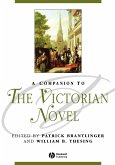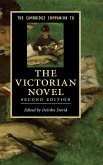How to Read the Victorian Novel provides a unique introduction to the genre. Using examples from the classics, like The Pickwick Papers, David Copperfield, Jane Eyre, The Woman in White, and Middlemarch, it demonstrates just how unfamiliar their familiarity is. The book attempts to break free of the sense that the Victorian novel is somehow old fashioned, moralizing, and formally careless by emphasizing the complexity, difficulty, and rare pleasures of the Victorian writers' strenuous efforts both to entertain and to teach; to create serious "art" and to appeal to wide audiences; to respond both to the demands of publishing and also to their own rich imaginative engagement with a world heading into modernity at full speed. Broad in its scope, the text surveys a wide variety of literary types and explores the cultural and historical developments of the novel form itself. The book also poses a series of "big questions" pertaining to money, capitalism, industry, race, gender, and, at the same time, to formal issues, such as plotting, perspective, and realist representation. In addition, it locates the qualities that give to the great variety of Victorian novels a "family resemblance," the material conditions of their production, their tendency to multiply plots, their obsession with class and money, their problematic handling of gender questions, and their commitment to realist representation. How to Read the Victorian Novel challenges our comfortable expectations of the genre in order to explore intensively a burgeoning and changing literary form which mirrors a burgeoning and changing society.








